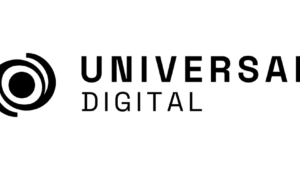Fact.MR predicts the sales of 3D scanners to exceed US$ 5 Bn by registering a CAGR of 15.06% in the forecast period 2022-2032. The 3D scanner market with numerous applications and technologies has gained immense traction across the globe on the back of mounting concern for quality assurance, inspection management, and engineering rescheduling.
Historically, from 2017 to 2021, the global sales of 3D scanners surged at a CAGR of 12%. Due to the onset of COVID-19 pandemic, the supply and demand chain across all end user industries was disrupted. Thus, in the initial quarter of the pandemic, the demand for 3D scanners dipped. As the world is gaining back normalcy, the demand for 3D scanners is expected to retrieve.
Healthcare and Entertainment Sectors Rampant Adoption Augmenting Sales of 3D Scanner?
Since the advent of 3D scanners, the global demand has been generated from industries such as industrial manufacturing and construction to check quality control, survey and inventory management.
However, as prices have decreased over the last few years, the global market for 3D scanner has begun to expand in terms of volume growth across niche industries including healthcare, entertainment & media and consumer goods.
In addition, continued interest in getting real time data through customization and high precision across key industries is anticipated to create remunerative opportunities in the global 3D scanning market.
The global 3D scanner market has remained fragmented and geographically concentrated over the historical years. However, increasing greenfield and brownfield investments across end use industries is pushing market actors to shift their focus towards other mainstream applications.
As a result, industry leaders in the global 3D scanner market such as Hexagon and FARO have introduced new portable 3D scanners with high speed, automation, and user-friendly features to acquire greater market share in the coming years.
Furthermore, continuous emphasis on efficient 3D scanners along with greater focus on digitization and industry 4.0 has spiked consumer interest across the globe. This is anticipated to boost the growth of the overall supply chain in the global market for 3D scanners.
- Type
- Optical 3D Scanners
- Laser 3D Scanners
- Structured Light 3D Scanners
- Configuration
- Handheld 3D Scanners
- Stationary 3D Scanners
- Cart Mounted 3D Scanners
- Shoulder Mounted 3D Scanners
- End Use Industry
- 3D Scanner for Industrial Manufacturing
- 3D Scanner for Healthcare
- 3D Scanner for Consumer Products
- 3D Scanner for Architecture & Construction
- 3D Scanner for Entertainment & Media
- 3D Scanner for Automotive
- 3D Scanner for Other End Use Industries
- Application
- 3D Scanners for Quality Control & Inspection
- 3D Scanners for Reverse Engineering
- 3D Scanners for Virtual Simulation
- 3D Scanners for Other Applications
- Technology
- Laser Triangulation-based 3D Scanners
- Pattern Fringe Triangulation-based 3D Scanners
- Laser Pulse Based-based 3D Scanners
- Laser Phase-Shift based 3D Scanners
Key Companies Profiled: Hexagon AB, Faro Technologies Inc., Nikon Metrology NV, Topcon Corporation, Trimble Inc., Creaform, 3D Digital Corporation, Perceptron, 3D Systems Corporation, Basic Software Inc., Maptek Pty Ltd, True Point Laser Scanning LLC Inc., Inc.
To Remain ‘Ahead’ Of Your Competitors, Request for Sample: https://www.factmr.com/connectus/sample?flag=S&rep_id=4601



































